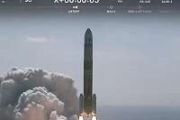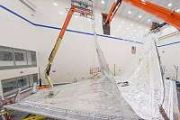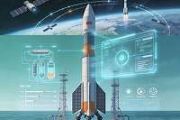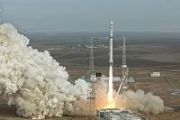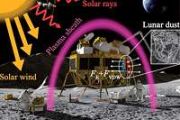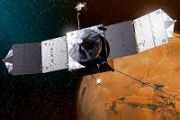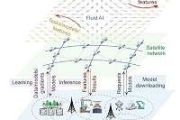
Copernical Team
NASA's Webb confirms its first exoplanet
 Researchers confirmed an exoplanet, a planet that orbits another star, using NASA's James Webb Space Telescope for the first time. Formally classified as LHS 475 b, the planet is almost exactly the same size as our own, clocking in at 99% of Earth's diameter. The research team is led by Kevin Stevenson and Jacob Lustig-Yaeger, both of the Johns Hopkins University Applied Physics Laboratory in La
Researchers confirmed an exoplanet, a planet that orbits another star, using NASA's James Webb Space Telescope for the first time. Formally classified as LHS 475 b, the planet is almost exactly the same size as our own, clocking in at 99% of Earth's diameter. The research team is led by Kevin Stevenson and Jacob Lustig-Yaeger, both of the Johns Hopkins University Applied Physics Laboratory in La Researchers create an optical tractor beam that pulls macroscopic objects
 Researchers have developed a way to use laser light to pull a macroscopic object. Although microscopic optical tractor beams have been demonstrated before, this is one of the first times that laser pulling has been used on larger objects.
Light contains both energy and momentum that can be used for various types of optical manipulation such as levitation and rotation. Optical tweezers, for
Researchers have developed a way to use laser light to pull a macroscopic object. Although microscopic optical tractor beams have been demonstrated before, this is one of the first times that laser pulling has been used on larger objects.
Light contains both energy and momentum that can be used for various types of optical manipulation such as levitation and rotation. Optical tweezers, for Astronomers dig out buried black holes with NASA's Chandra
 Hundreds of black holes previously hidden, or buried, have been found using NASA's Chandra X-ray Observatory. This result helps give astronomers a more accurate census of black holes in the universe.
The black holes in this new study are the supermassive variety that contain millions or even billions of times the mass of the Sun. While astronomers think that almost all large galaxies harbo
Hundreds of black holes previously hidden, or buried, have been found using NASA's Chandra X-ray Observatory. This result helps give astronomers a more accurate census of black holes in the universe.
The black holes in this new study are the supermassive variety that contain millions or even billions of times the mass of the Sun. While astronomers think that almost all large galaxies harbo Martian meteorite contains large diversity of organic compounds
 The Martian meteorite Tissint contains a huge diversity of organic compounds, found an international team of researchers led by Technical University of Munich and Helmholtz Munich's Philippe Schmitt-Kopplin and including Carnegie's Andrew Steele. Their work is published in Science Advances.
Tissint, which crash landed in Morocco more than 11 years ago, is one of only five Martian meteorite
The Martian meteorite Tissint contains a huge diversity of organic compounds, found an international team of researchers led by Technical University of Munich and Helmholtz Munich's Philippe Schmitt-Kopplin and including Carnegie's Andrew Steele. Their work is published in Science Advances.
Tissint, which crash landed in Morocco more than 11 years ago, is one of only five Martian meteorite Pausing to take in the view: Sols 3710-3711
 At this point in the mission, the team is very good at responding to tactical surprises. Today, we did not receive the necessary downlink to proceed with the nominal plan. Fortunately, we received enough downlink to know that the last plan finished successfully and the rover is safe. All we need to do is wait for the missing data and keep going!
We have enough images to look at the terrain
At this point in the mission, the team is very good at responding to tactical surprises. Today, we did not receive the necessary downlink to proceed with the nominal plan. Fortunately, we received enough downlink to know that the last plan finished successfully and the rover is safe. All we need to do is wait for the missing data and keep going!
We have enough images to look at the terrain In search of a new marker band drill site: Sols 3708-3709
 We continue to characterize the Marker Band and the bedrock just below it, with the aim of understanding the origin of the Marker Band. For today's two-sol plan, in an area below the Marker Band, we planned early morning APXS and MAHLI (Touch and Go) on the brushed target "Jenipapo," similar to the flattest material in the accompanying Mastcam image.
Mastcam will acquire some multi-spectra
We continue to characterize the Marker Band and the bedrock just below it, with the aim of understanding the origin of the Marker Band. For today's two-sol plan, in an area below the Marker Band, we planned early morning APXS and MAHLI (Touch and Go) on the brushed target "Jenipapo," similar to the flattest material in the accompanying Mastcam image.
Mastcam will acquire some multi-spectra SpaceX capsule lands safely on return from ISS
Rocket Lab sets new date for first Electron launch from U.S. soil
 Rocket Lab USA, Inc (Nasdaq: RKLB) has announced the launch window for its first Electron mission from U.S. soil is scheduled to open on January 23, 2023 with back-up dates extending through early February. The daily launch opportunity runs from 6:00 pm - 8:00 pm EST (23:00 - 1:00 UTC).
The "Virginia Is For Launch Lovers" mission will lift-off from Launch Complex 2 at Virginia Space's Mid-
Rocket Lab USA, Inc (Nasdaq: RKLB) has announced the launch window for its first Electron mission from U.S. soil is scheduled to open on January 23, 2023 with back-up dates extending through early February. The daily launch opportunity runs from 6:00 pm - 8:00 pm EST (23:00 - 1:00 UTC).
The "Virginia Is For Launch Lovers" mission will lift-off from Launch Complex 2 at Virginia Space's Mid- Private U.S. space company ABL fails to launch from Alaska
 An effort to put a satellite launcher into low-Earth orbit from Alaska's Kodiak Island failed after the rocket crashed back to the launchpad, destroying the facility, private U.S. company ABL Space Systems said.
The ABL RS1 lifted off from its Kodiak Island launchpad midafternoon Alaska time on Tuesday. The company said through its official Twitter account that it experienced an "anomal
An effort to put a satellite launcher into low-Earth orbit from Alaska's Kodiak Island failed after the rocket crashed back to the launchpad, destroying the facility, private U.S. company ABL Space Systems said.
The ABL RS1 lifted off from its Kodiak Island launchpad midafternoon Alaska time on Tuesday. The company said through its official Twitter account that it experienced an "anomal Russia to send rescue mission to space station
 Russia said Wednesday that it will send an empty spacecraft to the International Space Station (ISS) next month to bring home three astronauts whose planned return vehicle was damaged by a strike from a tiny meteoroid.
The Russian space agency, Roscosmos, made the announcement after examining the flight worthiness of the Soyuz MS-22 crew capsule docked with the ISS that sprang a radiator coo
Russia said Wednesday that it will send an empty spacecraft to the International Space Station (ISS) next month to bring home three astronauts whose planned return vehicle was damaged by a strike from a tiny meteoroid.
The Russian space agency, Roscosmos, made the announcement after examining the flight worthiness of the Soyuz MS-22 crew capsule docked with the ISS that sprang a radiator coo 

